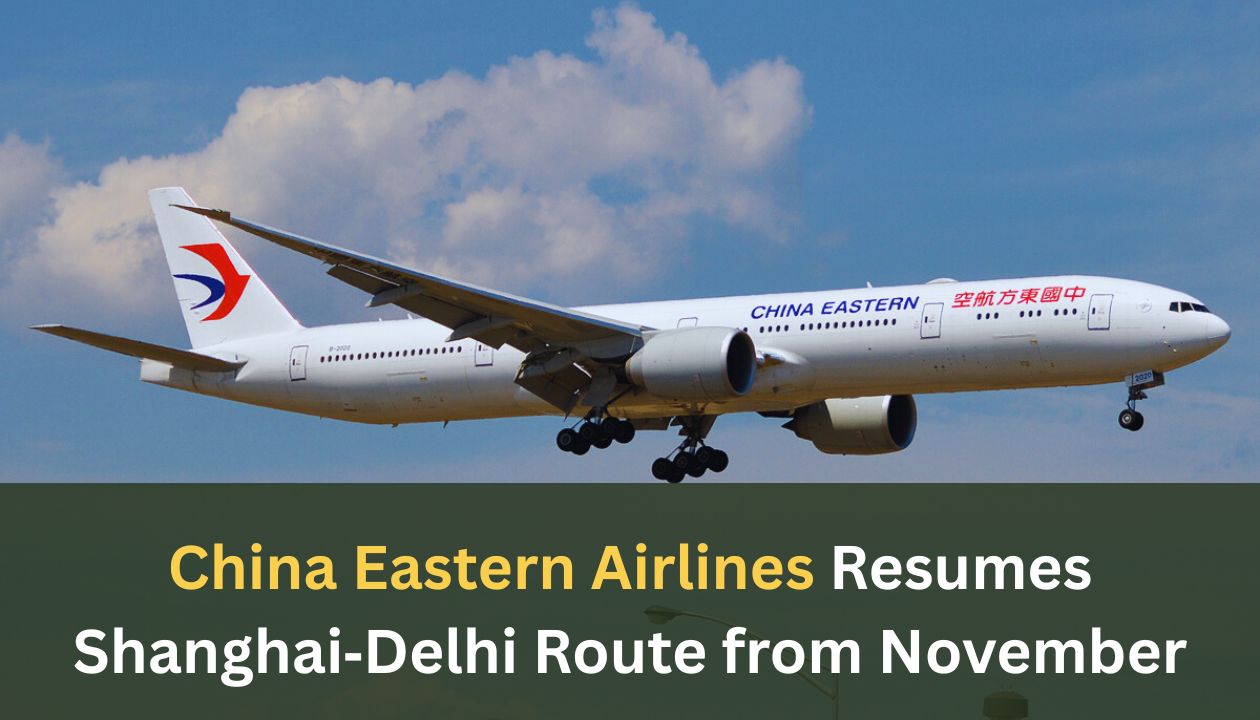In a major step toward restoring India‑China connectivity, China Eastern Airlines, the state‑owned Chinese carrier, will resume direct flights between Shanghai and Delhi beginning 9 November 2025. The flights will operate three times weekly on Wednesdays, Saturdays and Sundays, according to the airline’s booking portal.
Historical Suspension and Diplomatic Context
Direct commercial flights between China and India had been suspended in 2020 following deadly troop clashes along the Himalayan border and a subsequent freeze in bilateral air links. The resumption comes amid a diplomatic thaw: India’s Prime Minister Narendra Modi made his first official visit to China in over seven years for a regional summit, signalling a shift in relations.
Strategic Implications of Restoring Air Link
Boost to Trade and Business Travel
Restoring the Shanghai‑Delhi route is expected to provide a tangible boost to India‑China trade and business flows. Industry analysts say that easier travel for executives, supply‑chain personnel and investors may reduce logistical friction and encourage greater bilateral commercial engagement in tech, manufacturing and services.
Tourism and People‑to‑People Exchanges
Apart from business, the new service opens up opportunities for tourism and cultural links. With direct connectivity, Indian visitors to Shanghai and Chinese visitors to Delhi can plan shorter, more convenient trips. This may also spur cross‑border investments in hospitality and allied sectors.
Geopolitical Message
The reinstatement of regular flights sends a signal of normalization in India‑China ties. Aviation restoration is often seen as a barometer of broader diplomacy: access, cooperation and trust between neighbouring nations. Some analysts view the move as part of India’s multi‑vector foreign‑policy strategy, evolving beyond confrontation toward selective engagement.
Operational Details and Future Prospects
China Eastern’s Airlines booking platform lists the route code and schedule from 9 November, with a three‑times‑weekly frequency. Indian carrier IndiGo has meanwhile announced plans for daily non‑stop flights between Kolkata and Guangzhou starting 10 November, signalling China’s interest in broader connectivity with India. Aviation industry executives note that a gradual scaling of frequency, cargo operations and possible stop‑overs may follow as the route stabilizes.
Reopening After Five Years: Why Now?
Analysts highlight multiple contributing factors:
- A decline in pandemic‑era restrictions and improved health protocols.
- Diplomatic engagements at senior levels, including discussions on trade deficits and regional stability.
- Economic pressures on both nations to expand markets, tourism and technology‑enabled industries.
- China’s desire to diversify outbound connections amid evolving global dynamics, and India’s interest in increasing inbound investments.
Connectivity and Cooperation
Progress is meaningful when it fosters unity, understanding and shared welfare rather than division. The renewal of air links between two major neighbours reflects a broader principle: that when channels of cooperation open, humanity and mutual upliftment get precedence over isolation and conflict. Just as spiritual growth requires removing barriers and expanding awareness, so too does international friendship thrive when pathways—literal and figurative—are restored.
What Comes Next: Opportunities and Risks
While the route’s revival holds promise, several challenges remain:
- Commercial viability will depend on consistent demand, competitive pricing and efficient operations amid legacy regulatory frameworks.
- Political or bilateral frustrations may re‑emerge if trade, investment or border issues remain unresolved.
- Security, air‑space management and airport infrastructure from both sides will need upgrades to sustain growth.
If handled well, however, this route may become a template for additional India‑China links and a visible marker of regional integration.
Pathways Forward in Aviation Connectivity
Restored air connectivity can pave the way for complementary initiatives—joint aviation ventures, expanded cargo routes, tourism partnerships and integrated multimodal logistics corridors. For Delhi and Shanghai, the new link may serve as a gateway to wider Asia‑Pacific networks, benefit supply‑chain partners and boost the soft‑power dimension of both nations.
Read Also: Trump and Xi set for South Korea summit
FAQs: China Eastern Shanghai‑Delhi Flight Resumption
Q1. When will China Eastern Airlines resume flights between Shanghai and Delhi?
Flights will resume on 9 November 2025, with a schedule of three departures each week (Wednesday, Saturday, Sunday).
Q2. Why were flights suspended in the first place?
Direct air services were suspended in 2020 following a violent border clash and strained diplomatic ties between China and India.
Q3. What is the significance of this route resumption?
It signals diplomatic thawing, improved connectivity for business and tourism, and the potential for increased trade and investment between the two countries.
Q4. Are other India‑China routes reopening?
Yes, Indian carrier IndiGo has announced daily non‑stop flights from Delhi to Guangzhou starting 10 November 2025.
Q5. What are the major risks to the success of this service?
Demand uncertainty, regulatory or infrastructure bottlenecks, pricing competitiveness and possible diplomatic setbacks remain key risks.










